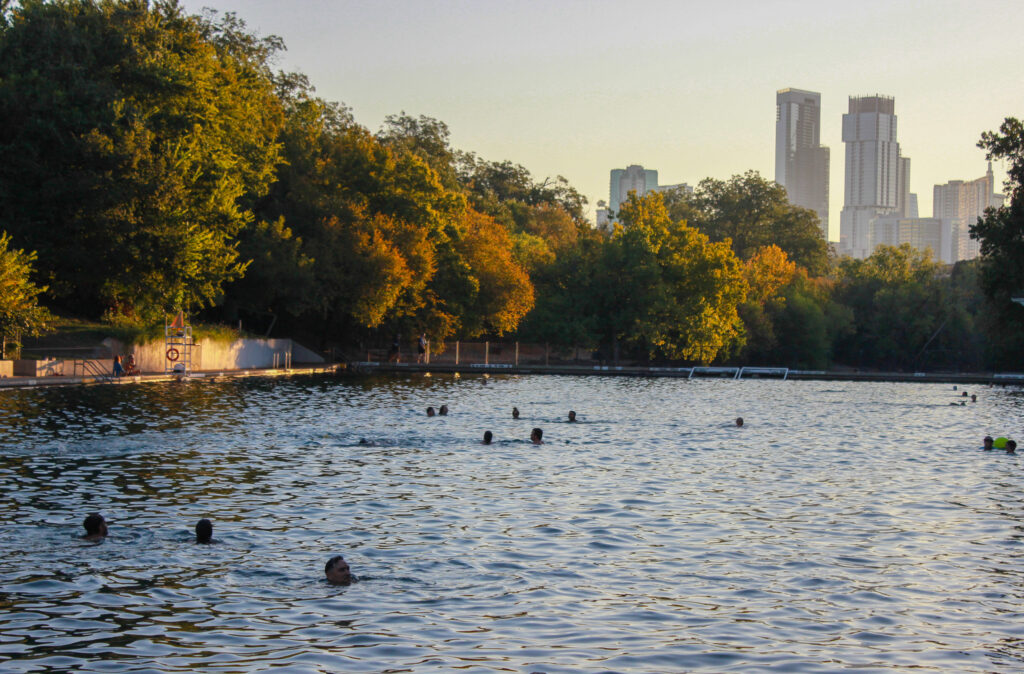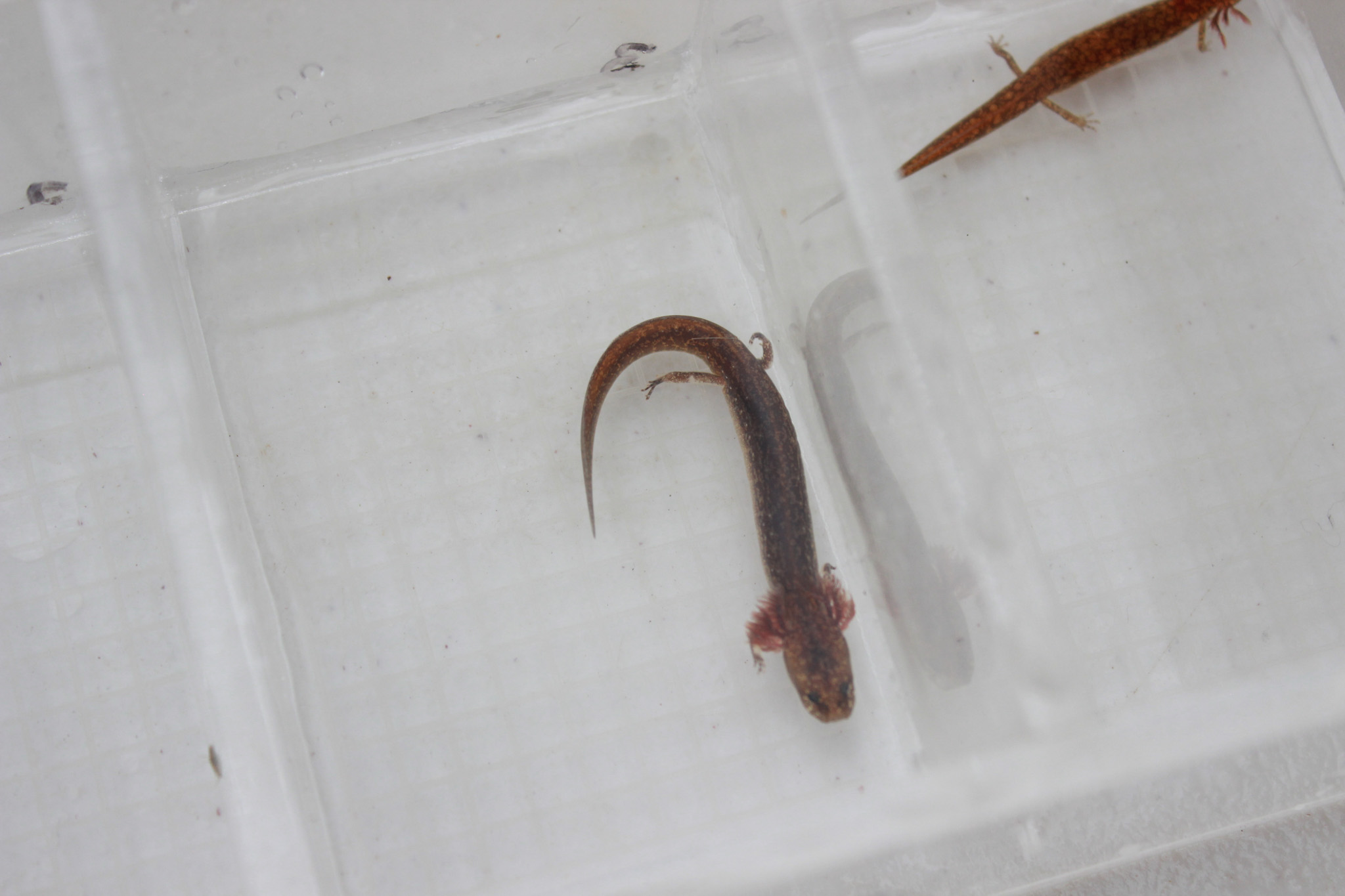The Barton Springs and Austin Blind salamanders are iconic residents of the greater Austin area. They are found nowhere else in the world except within the Barton Springs segment of the Edwards Aquifer, its spring outlets, and the surrounding habitat.
If you’ve ever visited Barton Springs Pool, you may have noticed the decoy ducks near the diving boards with signs reminding swimmers not to disturb the salamanders below. Or perhaps you’ve seen the fenced-off Eliza Spring amphitheater with signs stating it’s critical habitat for the species. For most community members, these signs and protected areas are the closest they’ve come to encountering either of these animals.
Though seemingly elusive beyond the murals and signage seen around town, these tiny salamanders play a significant role in the District’s groundwater management.
Characteristics
The Barton Springs salamander is a fully aquatic amphibian, spending its entire life in the springs and caves of the Edwards Aquifer. As adults, these animals grow to about 3 inches in length. Unlike most amphibians, they lack lungs and rely on respiration through their skin and the red, feathery gills adorning either side of their head. Their coloration varies widely, ranging from brown, purple, orange, and red. They can also feature a speckled pattern, which is the result of cells containing various pigments.
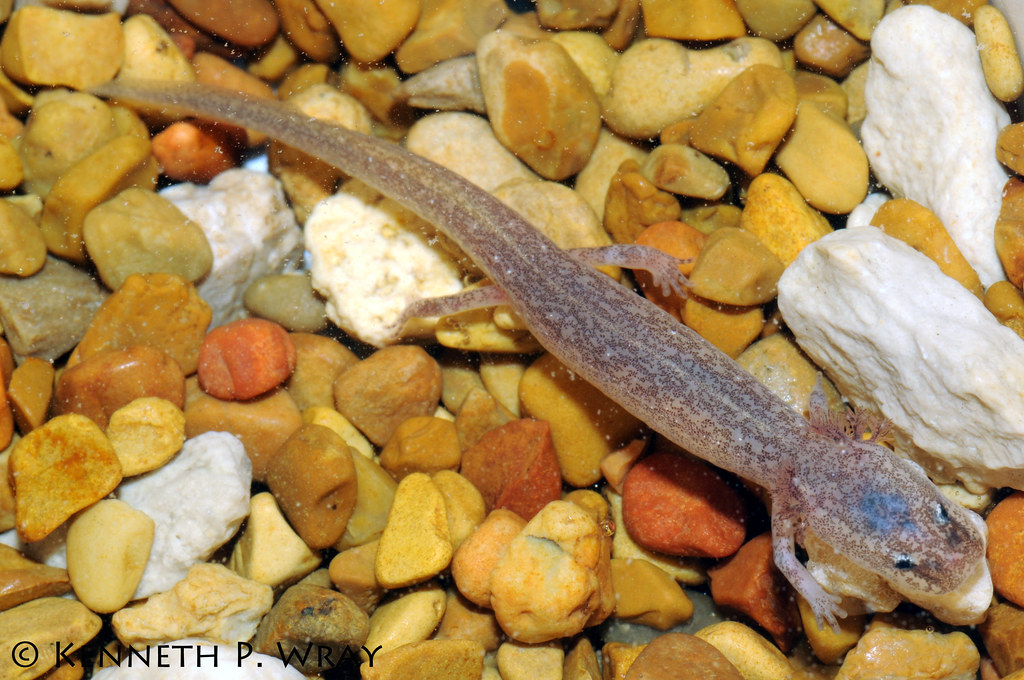
While similar, the Austin Blind salamander has a few differing characteristics. It doesn’t have image forming eyes, which according to the City of Austin is an adaptation to its life spent primarily in the underground waters of the Edwards Aquifer that feeds Barton Springs. Austin Blind salamanders also have larger more shovel-shaped heads than the closely related Barton Springs salamander.
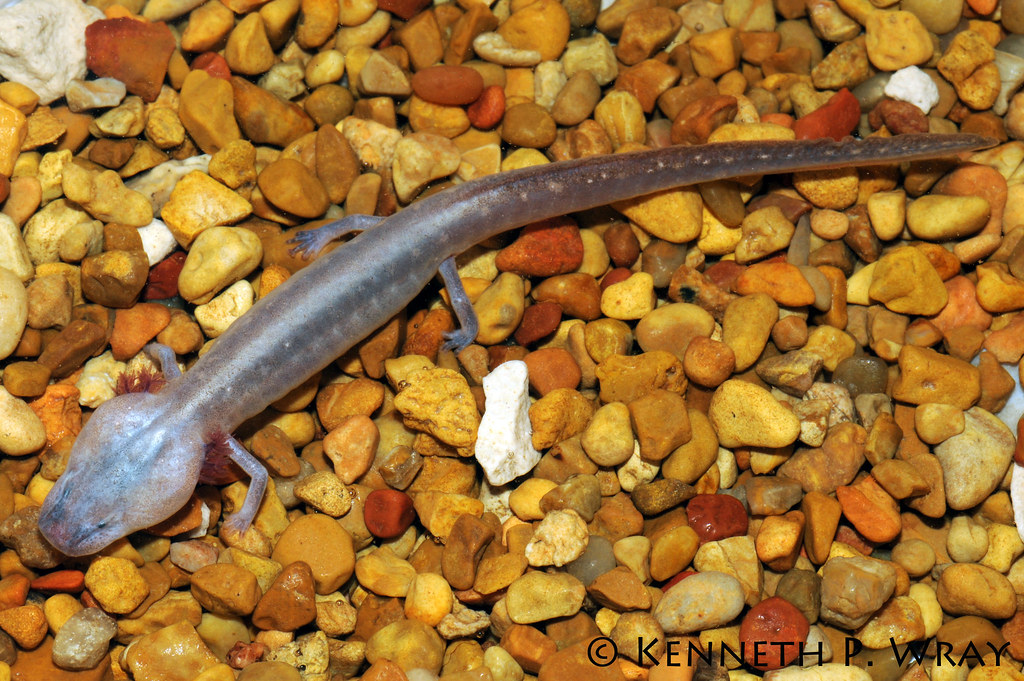
Salamander Influence on the District’s Drought Management
The District is responsible for protecting groundwater levels and springflow in the Barton Springs segment of the Edwards Aquifer, which these species rely on for habitat. To permit water being pumped out of the aquifer, the District must comply with the US Fish and Wildlife Service (USFWS) and the Endangered Species Act by adhering to a Habitat Conservation Plan. This plan details how groundwater use can affect the salamanders, strategies to reduce these impacts, and specific conservation measures to safeguard their habitat.
So, how do lower groundwater levels affect these species? As groundwater levels decline, so does springflow at Barton Springs. Reduced springflow leads to lower amounts of dissolved oxygen, which the salamanders rely on for survival. There have been studies that document the impact of varying levels of DO on the salamanders. During drought conditions, groundwater pumping lowers water levels and springflow, which in turn is associated with reduced DO. This could negatively impact both the Barton Springs and Austin Blind salamanders.
To safeguard groundwater levels and maintain adequate springflow at Barton Springs for the salamander populations, the District has established a “drought trigger methodology.” This system allows the District to implement responsive actions, such as reducing permitted groundwater pumping, when aquifer conditions reach or fall below certain pre-determined thresholds. These thresholds are tied to two key metrics: flow at Barton Springs and groundwater levels in the Lovelady monitor well. These metrics have been determined to be representative of the overall groundwater storage and drought status of both the Edwards and Trinity aquifers. These measures help maintain aquifer levels and flow at Barton Springs while supporting the protection of these endangered species.
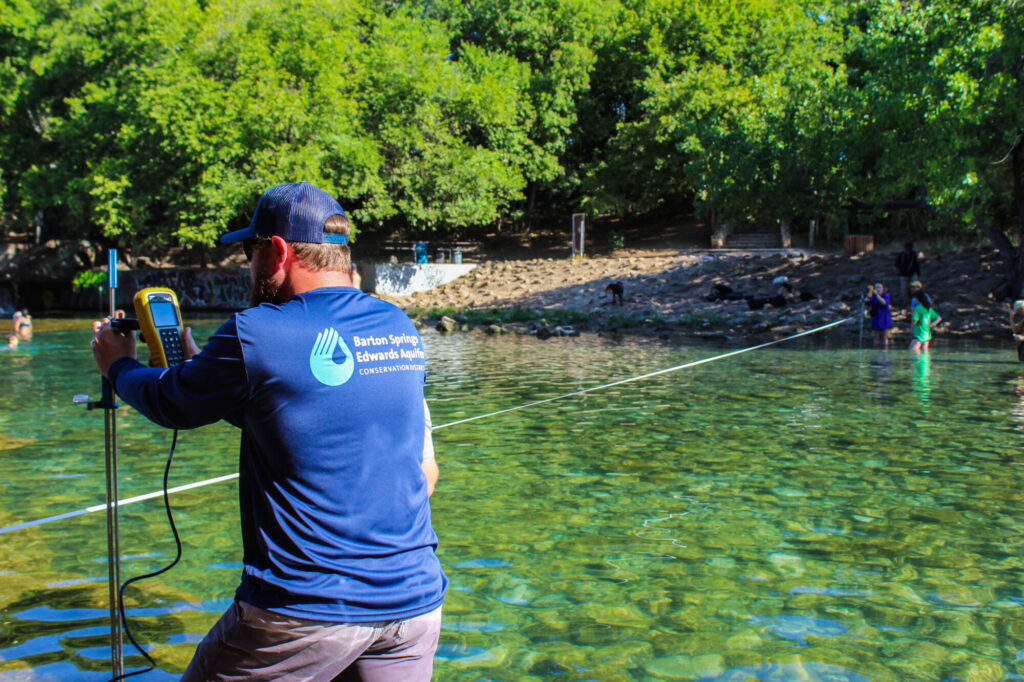
Monitoring Salamander Populations and Springflow
The City of Austin is also required by the USFWS to hold a permit and have an HCP in place. This permit and plan allow the city to operate Barton Springs Pool as a recreational site while also protecting these salamander species that inhabit the four springs that make up the Barton Springs Complex. A key part of the plan involves monitoring the salamander populations, which the City of Austin’s Watershed Protection Department conducts on a quarterly basis. These surveys help scientists track population trends and understand what environmental factors may influence their survival. Because both of these species spend part of their lives underground in the aquifer, not all salamanders are visible during these surveys, and the numbers are considered estimates rather than an exact census.
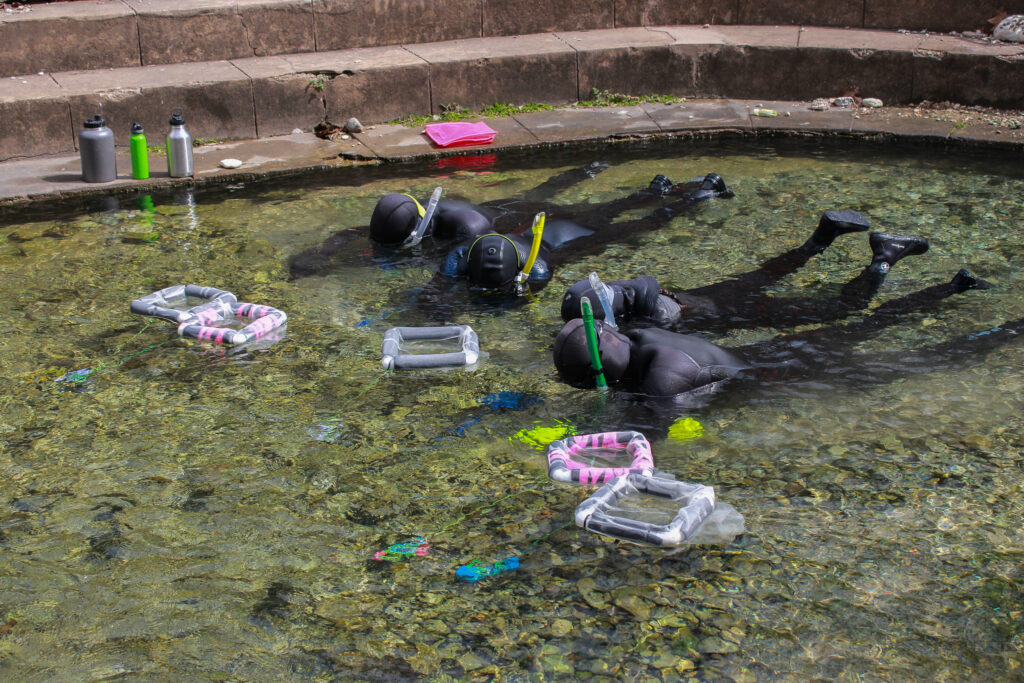
The District collaborates with the US Geological Survey (USGS) to monitor water levels at the Lovelady monitor well and works with both USGS and the City of Austin to track Barton Springs flow. USGS maintains real-time gauges at both sites—providing the District and the public with continuous data. To verify the gauge’s accuracy, the District’s Aquifer Science team conducts manual measurements at Lovelady. In addition, the District manually measures springflow at Barton Springs in collaboration with USGS and the City of Austin. The frequency of these springflow measurements depends on drought conditions in the Barton Springs segment of the Edwards Aquifer, increasing when the drought is more severe. Closely monitoring water levels at both sites helps the District and the City of Austin maintain groundwater levels required to protect the endangered species.
A Collaborative Effort
Protecting the endangered Barton Springs and Austin Blind salamanders is a shared responsibility among the District, the City of Austin, USFWS, Texas Parks and Wildlife, and other partners. These conservation efforts have added benefits—safeguarding the sections of aquifers that provide drinking water to nearly 100,000 people and sustaining the beloved Barton Springs Pool, often called the “soul of Austin.” Ongoing research evaluates the effectiveness of current practices while exploring new strategies for long-term protection. Though complex and multifaceted, this work is important—not only for preserving these unique species but also for protecting a water source for many communities from Austin to San Marcos and the more than 800,000 visitors who enjoy Barton Springs Pool each year.
